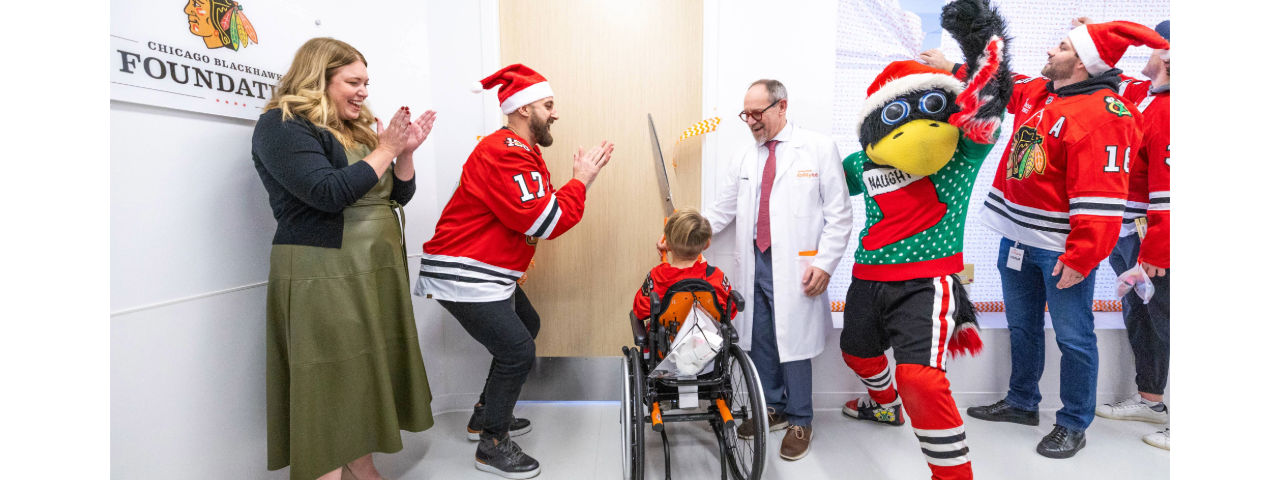Body
Certified hand therapists (CHTs) are occupational therapists who specialize in treating the entire upper limb — including rehabilitation of the hand, wrist, elbow and shoulder. They have thousands of hours of advanced training and national certification through the Hand Therapy Certification Commission and have completed at least 4,000 hours of direct experience in hand therapy.
Michelle Annes is a CHT at Shirley Ryan AbilityLab. In her unique role, she treats a diverse range of complex upper extremity cases in both outpatient musculoskeletal and inpatient rehabilitation. She primarily sees patients with shoulder, arm, elbow, forearm, wrist, and hand and digit injuries.
Follow along for a day in the life with Michelle as she splits her time between outpatient and inpatient care settings:
7:30 am
Body
I arrive at Shirley Ryan AbilityLab and head to our outpatient clinic, where I will see all of my outpatient visits. Before my first patient arrives, I check my email and review my schedule. I like to make sure I have time to review charts before I start seeing patients.
My role is split 50-50 between inpatient and outpatient. Monday and Thursday I am on outpatient all day. Tuesday and Friday I am on the inpatient floors. Today is Wednesday, and the only day of the week I spend treating on both outpatient and inpatient.
8 am
Body
My first outpatient session begins. The patient is a referral from our complex nerve clinic. I focus on managing pain and helping the patient regain functional use of their arm after a peripheral nerve injury.
8:45 am
Body
My second patient has chronic thumb pain due to carpometacarpal (CMC) arthritis. The custom thumb braces I made last session have been helping to manage their thumb pain. Today, we review ergonomic strategies, adaptive equipment and activity modification to prevent flare-ups or worsening symptoms.
9:30 am
Body
My third outpatient session is an evaluation for a patient who has been experiencing numbness and tingling in two of their fingers. This assessment includes nerve tension testing, sensibility testing and strength testing — targeted strength tests to identify specific muscle weakness associated with nerve compression. The results of the assessment are consistent with cubital tunnel syndrome, which is, often exacerbated by repetitive bending of or pressure on the elbow. This patient was provided with activity modification and position strategies, as well as education about what to expect during future visits.
10:15 am
Body
I get to spend some time mentoring one of our newer hand therapists. We discuss plans for upcoming evaluations, tips for documentation and treatment planning. I guide this therapist through clinical reasoning by asking questions and encouraging problem-solving through each scenario. It’s a collaborative process that helps build confidence. These sessions are one of my favorite parts of the week. Supporting new team members helps strengthen our whole department.
11 am
Body
My fourth and final outpatient session of the day is with a patient who has lateral epicondylitis, commonly known as tennis elbow. When we first started working together, the patient reported a 7-out-of-10 pain level all day long. But, after modifying their activities, they have made excellent improvements. Today, the pain has abated so much that we actually can start working on gentle strengthening exercises.
Noon
Body
I head up to the staff commons to eat my lunch, chat with colleagues, finish my morning notes, check messages, respond to emails and prep for my afternoon with inpatients in the Harris Family Foundation Arms + Hands Lab. Working in inpatient requires a lot of flexibility with treatment planning and communication across care teams; it provides many opportunities for creative problem-solving, which I really enjoy.
1 pm
Body
My first inpatient session is for a new hand therapy assessment. The patient sustained a traumatic brain injury and orthopedic injuries to their arms and hands in a motor vehicle accident. During our session today, the patient’s family also is present.
The patient had not tried to move or use their injured hand since the accident. By the end of the hour, the patient attempts to pick up small items with their hands, and reports their fingers are feeling a little less painful to move. I encourage them to continue to use the injured hand throughout the day.
2 pm
Body
I head to the 21st floor for my next appointment with a patient who, like my first patient of the day, I first met in our complex nerve clinic. During our session today, the patient and I review the information about functional outcomes and recovery timelines for nerve and tendon transfers.
3 pm
Body
My last patient of the day! I have been working with this patient on regaining hand mobility after a burn injury, using splinting and range-of-motion exercises. Today is our last session together before their discharge from inpatient rehabilitation. The patient’s skin grafts are healing well, and they have made good progress since their initial visit.
4 pm
Body
With my last session over, I spend the final half hour of my day on documentation, emails and sending updates to the care team. By 4:30, it’s time to head home.

